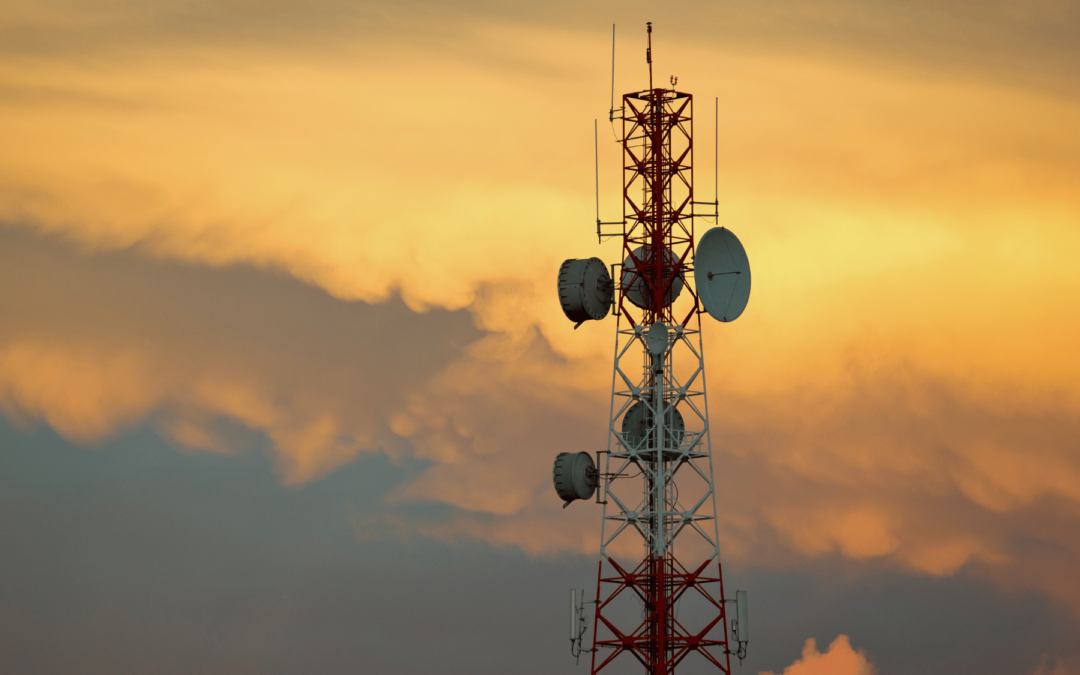The Internet of Things (IoT) has revolutionized the way we interact with the world around us. Every day, thousands of IoT devices are connected to the internet. According to Statista‘s data, it is forecasted that by 2030, the number of IoT-connected devices will increase to 32.1 billion. But how do these billions of devices communicate so seamlessly?
The answer lies in the two most famous cellular IoT technologies in the market for global IoT connectivity i.e. NB-IoT and LTE-M. These Low Power Wide Area (LPWA) technologies cater to IoT applications requiring small amounts of data transmissions, lower costs, and longer battery life.
But what makes these technologies so special? And how do they compare against each other? Let’s find out.
What is Standard LTE?

LTE stands for Long Term Evolution and is standard for mobile devices and wireless broadband communication through data terminals called 4G LTE. It allows fast connectivity for IoT devices through narrow bandwidth with minimal power consumption and is much quicker than 3G technology.
Advantages of Standard LTE
High-Speed Data Transfer
One of the most significant advantages of LTE is its high-speed data transfer capabilities. With peak download speeds of up to 100 Mbps and upload speeds of up to 50 Mbps, LTE enables users to stream high-definition videos, download large files, and engage in real-time online gaming with minimal lag.
Low Latency in Communications
Another key benefit of LTE is its low latency, which refers to the time it takes for data to travel from the source to the destination. LTE network latency is typically around 10-15 milliseconds, compared to 50 milliseconds or more in 3G networks. This reduction in latency enhances the user experience, particularly in applications requiring real-time interaction, such as video conferencing and online gaming.
Global Compatibility and Roaming
LTE provides global compatibility and roaming, enabling users to maintain high-speed connections while traveling across different regions. With LTE being adopted as a standard by most network operators worldwide, users can enjoy consistent performance regardless of location.
What Is NB-IoT?
Narrowband Internet of Things (NB-IoT) is a Low-Power Wide Area Network (LPWAN) technology that works in a narrow frequency band of just 200 kHz. NB-IoT is suited for indoor coverage with low power consumption, low cost, long battery life and, making it ideal for IoT devices.It can support high connectivity for 100.000 devices per cell to connect and offer a peak downlink speed of 26 kbps in the 3GPP standard. NB-IoT cost decreases with time as demand for this new technology increases compared to GSM/GPRS modules. This technology can exist in 2G, 3G, and 4G mobile networks and can be supported by major mobiles, module manufacturers, chipsets, etc.

Advantages of NB-IoT
Low Power Consumption
NB-IoT introduces power-saving technologies like Power Saving Mode (PSM) and Extended Discontinuous Reception (eDRX), which enable devices to sleep while not in use and increase the time frame for examining the radio for data that has been received, accordingly.
Good Indoor Coverage
NB-IoT connections are capable of traversing thick building materials, which makes them ideal for devices in “noisy” indoor areas. The theoretical MCL for NB-IoT connectivity is 164 decibels (dB), the highest for any LPWAN.
Low-Cost
NB-IoT networks employ worldwide broadband connections, which operate internationally and are less expensive than 4G LTE or 5G transmitters.
Efficient Spectrum Use
NB- IoT networks utilize lower bandwidths, enabling multiple devices to share the same spectrum. As the Internet of Things (IoT) expands to billions of interconnected devices, effective spectrum use is vital.
What is LTE-M?
LTE-M, also known as Machine Type Communication (MTC) in two versions (Cat-M1 and Cat-M2), is an LPWAN technology, designed by having IoT products in mind. Unlike NB-IoT, LTE-M permits IoT devices to connect directly to a 4G network without the requirement for a gateway, operating just on batteries. It allows a data transfer speed of up to 1 Mbps and shows exceptional mobility and voice characteristics. LTE-M is ideal for applications that need lower latency and mobility, such as asset tracking, healthcare monitoring, and smart city applications.

Advantages of LTE-M
Power Efficiency
LTE-M includes a Power Saving Mode (PSM) and extended Discontinuous Reception (eDRX), which enable IoT devices to “sleep” while not in operation and scan for downlink information less often, resulting in lower power usage.
Data Speed
Although slower than LTE, LTE-M offers superior data speed compared to older network coverage and other Low Power Wide Area Networks (LPWANs), making it suitable for IoT applications, including those involving video streaming.
Mobility
With a latency of just 10-15 milliseconds and the capability to support cell handovers, LTE-M is perfect for roaming IoT applications such as investment tracking and fleet managing devices.
Coverage
LTE-M networks can utilize 4G LTE infrastructure, providing broad coverage and more suitable indoor penetration due to a Maximum Coupling Loss (MCL) of 156 decibels (dBs).
What’s the Difference Between Standard LTE vs. NB-IoT?
Standard LTE, NB-IoT, and LTE-M are all cellular technologies but have different features and use cases. Standard LTE is designed for high-speed internet access on mobile devices, while NB-IoT and LTE-M have been developed for IoT applications, with NB-IoT optimized for static devices that send small amounts. Here’s a simplified difference between these technologies:
| Feature | Standard LTE | NB-IoT | LTE-M |
|---|---|---|---|
| Bandwidth | 20 MHz | 180 kHz (Fit into GSM module) | 1.08 MHz |
| Power Consumption | High | Low (devices can run on batteries for years) | Moderate (more than NB-IoT but less than standard LTE) |
| Latency | Low (around 10 ms) | High (1-10 seconds) | Low (around 10-15 ms) |
| Uplink Speed | Upto 50 Mbps | 66 kbps | 1 Mbps |
| Voice/support | Voice and Data | Data Only | Voice and Data |
| Mobility | Yes | Limited | Yes |
| Network Deployment | Requires dedicated spectrum and infrastructure | Easier for operators to incorporate with GSM network | Relatively easy to add to existing LTE network |
| Coverage/ Penetration | Wider coverage where 4G is available | Excellent for indoor coverage | Good for wider use |
| Ideal Use Cases | High data rate applications like video streaming, online gaming, web browsing | Low data rate applications sending data infrequently, such as smart meters, asset trackers, environmental sensors | Applications that need to send larger amounts of data or move around, such as wearables, vehicle trackers, healthcare monitors |
| Global Availability | Yes | Yes but varies by region | Yes but varies by region where LTE technology exists |
| Cost | High | Low | Moderate |
Comparison Table: Standard LTE vs (NB-IOT & LTE-M):
Conclusion:
The comparison table reveals that standard LTE, NB-IoT, and LTE-M each have strengths that make them better suited for different use cases.
Key Takeaways
- Standard LTE provides high data rates and bandwidth, making it appropriate for applications requiring real-time, high-speed data transfer. However, it consumes a lot of power and incurs high costs, making it unsuitable for IoT devices that need to operate for extended periods without recharging or where cost is a critical factor.
- In contrast, designers create NB-IoT for low power consumption and cost, making it ideal for applications where devices transmit small amounts of data over extended periods. It also has exceptional penetration capabilities, making it ideal for devices in remote locations. However, it has a low data rate and no mobility support, making it unsuitable for applications that demand high-speed data transfer or device mobility.
- LTE-M achieves a balance between the two. It provides modest data rates and power consumption while also allowing for device mobility. It also has strong penetration potential and is based on existing LTE technology, making it widely accessible. However, it costs more than NB-IoT but less than Standard LTE.
Hence, your choice between Standard LTE, NB-IoT, and LTE-M depends on the specific requirements of your IoT product.
We hope this article will help you understand the key differences between these technologies and choose the one best suited for your needs. Don’t forget to share your thoughts with us on our blog via LinkedIn, we’d love to hear from you. For read more interested blogs to click here

